- Home
- Prelims
- Mains
- Current Affairs
- Study Materials
- Test Series
Dec 17, 2021
UNION CABINET GIVES NOD TO RAISE WOMEN’S MARRIAGE AGE TO 21
Recently, the Union Cabinet took the decision to raise the legal age of marriage for women from 18 to 21 years, based on Jaya Jaitly committee recommendations.
Highlights:


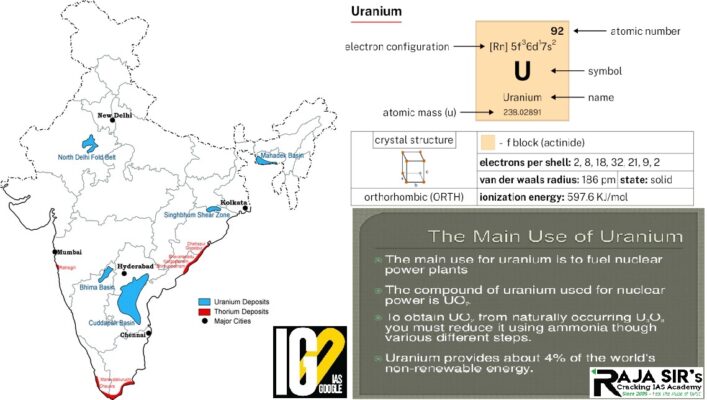

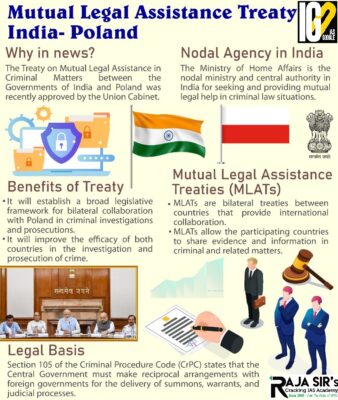

 Excavation at Eran:
Excavation at Eran:

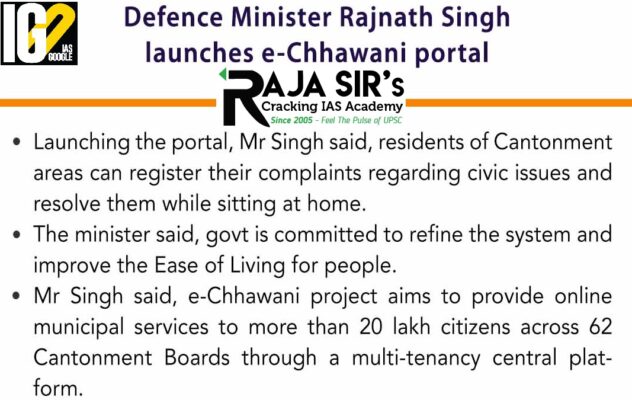 Recently, Raksha Mantri gives away Raksha Mantri Awards for Excellence to DGDE personnel
Recently, Raksha Mantri gives away Raksha Mantri Awards for Excellence to DGDE personnel
 Recently, Union Minister for Rural Development and Panchayati Raj launched VIKAS Portal
Recently, Union Minister for Rural Development and Panchayati Raj launched VIKAS Portal
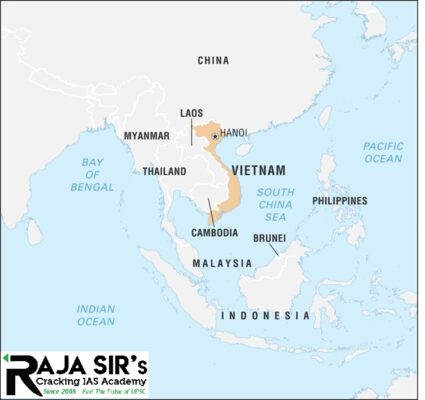
 Vijay Diwas
Vijay Diwas
 Waterfall implosion collapse mechanism
Waterfall implosion collapse mechanism
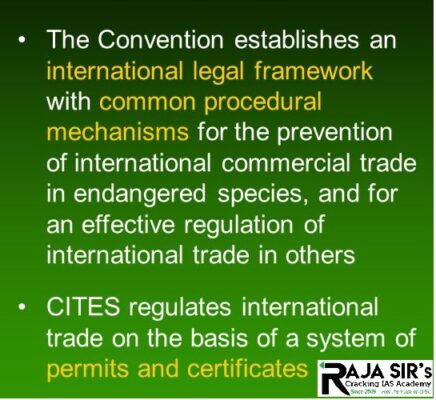 Wildlife Protection Amendment bill
Wildlife Protection Amendment bill

- Jaya Jaitly committee was set up by Ministry for Women and Child Development (MWCD) to look into the correlation between the age of marriage with issues of women’s nutrition.
- The main objectives of the committee were:
- to look at the feasibility of increasing the age of marriage and its implication on women and child health,
- how to increase access to education for women.
- The committee recommended the following:
- The age of marriage of woman shall be increased to 21 years in a phased manner.
- Increasing access to schools and colleges for girls,
- In cooperation of Skill, business training and sex education in schools.
- Awareness campaign be undertaken on a massive scale to encourage social acceptance of the new legislation.
- It discourages child marriages and prevent the abuse of minors.
- Various religions have their own personal laws based on their customs.
- It will bring the age of marriage for both men and women at par.
- The National Human Rights Commission in 2018recommended that there should be a uniform age of marriage for boys and girls.
- Men and women will gain economically and socially by marrying when they are more than the legal age.
- Early marriages have impact on Infant Mortality Rate.
- It reduces child anthropometric failure, diarrhoea and anaemia for first births.
- Early marriages and early pregnancies have impacts on nutritional levels of mothers and their children, and their overall health and mental wellbeing.
- It will increase the chances of education to those who are cut off from access to education and livelihood after an early marriage.
- It will increase women’s participation in higher education.
- They will get more empowered to take decisions and act wisely
- Improved level of education in the country will also improve.
- Women pursuing higher education and careers become financially empowered, thus resulting in a more egalitarian society in thinking.
- Increased women participation in public sphere:
- It will help increase women’s participation in the workforce of the country.
- It will reduce the practice of hypergamy, where the boy has to be older, more educated, must have a higher income, and so on.
- The legislation would push a large portion of the population into illegal marriages.
- Rural women will be affected more than urban women
- The law would end up being coercive, negatively impacting marginalised communities,
- 70% of early marriages take place in deprived communities such as SCs and STs, and the law will make them law-breakers.
- The law will simply push these marriages underground instead of preventing them.
- The law to prevent child marriages did not worked earlier. Thus, it is highly likely that it won’t work in today’s era as well.
- The marriage age at 18 was set in 1978, but child marriage started to decline only in the 1990s.
- Reduced poverty and increased primary education are the reasons for the reduced child marriage cases.
- Child marriages happens as a child has no access to higher education.
- It will lead to criminalisation of a large number of marriages that will take place once the law comes into effect.
- It violates the right to privacy mandated under Article 21.
- The girls will have no say in their personal matters until they are 21.
- The elementary right that the child rights convention bestows upon minors will be denied to girls right up till 21.
- The convention includes the right to be heard, the right for their views to be considered.
- It violates some provisions of Prohibition of Child Marriage Act (PCMA), 2006
- PCMA treats an underage marriage as valid as long as the minors involved in the marriage want it to remain valid.
- It has a provision that allows girls who elope with their partners to demand that their marriages are protected.
- This provision will be taken away with the implementation of the new law.

- The Bill provides for the establishment of a Data Protection Authority (DPA).
- The report suggests that there should be single regulatory body for personal and non-personal data.
- There should be single regulatory body for personal and non-personal data.
- The Personal Data Protection Bill provides for the establishment of a Data Protection Authority (DPA).
- To treat all social media platforms as publishers and be held accountable for the content.
- To select the receiver of the content and also exercise control over the access.
- Data fiduciaries and data processors would also require sufficient time for transition.
- Provisions of the Act shall be deemed to be effective not later than 24 months from the date of notification.
- A comprehensive analysis and consultation with stakeholders should be undertaken.
- To discover and understand the technical or operational and managerial requirements for compliance of the provisions of the bill.
- To prepare a policy for gradual data localisation.
- To devise a single window system to deal with complaints, penalties and compensation.
- It should be flexible as digital technology is evolving rapidly.
- The penalty of ₹5 crore or two per cent of its total worldwide turnover of the preceding financial year, if a fiduciary fails to register with the Data Protection Authority (DPA).
- The penalty of ₹15 crore or four per cent of its total worldwide turnover for processing personal data in violation of the provisions of the Bill.
- The fiduciary should report a data breach within 72 hours.

- Uranium is a hard, dense, malleable, ductile, silver-white, radioactive metal.
- This metal has very high density.
- It can form solids solutions and intermetallic compounds with many of the metals.
- Depleted uranium is used as shielding to protect tanks, and also in bullets and missiles.
- The main use of uranium in the civilian sector is to fuel commercial nuclear power plants.
- The isotope uranium 238 is used to estimate the age of the earliest igneous rocks and for other types of radiometric dating.
- Phosphate fertilizers are made from material typically high in uranium, so they usually contain high amounts of it.
- Exposure to a certain amount of uranium from food, air, soil and water, as it is naturally present in all these components.
- Uranium in air exists as dust that will fall into surface water, on plants or on soils through settling or rainfall.
- It will than sink to the sediment in water or to the lower soil layers.
- Impacts of Exposure to uranium
- Normal functioning of the kidney, brain, liver, heart, and numerous other systems can be affected by uranium exposure.
- It has caused reproductive defects, and other health problems in rodents, frogs and other animals.

- It is India’s first Green Hydrogen based Energy Storage Project.
- It would be a precursor to large scale hydrogen energy storage projects.
- It would be useful for studying and deploying multiple microgrids in various off grid and strategic locations of the country.
- The hydrogen would be produced using the advanced 240 kW Solid Oxide Electrolyser.
- It is a unique project for India and project configuration is designed in-house by NTPC.
- The project is in-line with the vision of Prime Minister for becoming carbon neutral by 2070.
- It would help for decarbonising the far-off regions of the country like Ladakh, J&K etc.
- It will help in making Ladakh a carbon neutral territory.
- Green hydrogen is hydrogen that is produced using renewable energy through electrolysis.
- Green hydrogen has significantly lower carbon emissions than grey hydrogen.
- Electrolysis of water
- Steam reforming of biomethane
- Pyro-reforming of glycerine of renewable origin
- Green hydrogen is produced by splitting water using electricity generated from low-carbon sources.
- If the electricity comes from renewable sources such as wind, solar or hydro, then the hydrogen is effectively green.
- In steam-methane reforming, methane reacts with steam under 3–25 bar pressure (1 bar = 14.5 psi) in the presence of a catalyst to produce hydrogen, carbon monoxide, and a relatively small amount of carbon dioxide.
- Fuel-cell vehicles
- Alternative fuels
- Energy storage
- Heating
- Replacing existing hydrogen feedstocks


- It is an agreement between two or more countries for the purpose of gathering and exchanging information in an effort to enforce public or criminal laws.
- A mutual legal assistance request is commonly used to formally interrogate a suspect in a criminal case, when the suspect resides in a foreign country.
- This assistance may take the form of:
- Examining and identifying people, places and things
- Custodial transfers
- Providing assistance with the immobilization of the instruments of criminal activity.
- This assistance may take the form of:
- To enhance capability and effectiveness of both countries in investigation and prosecution of crimes, including crimes related to terrorism.
- It will increase effectiveness of India in tackling criminal activities involving Poland.
- Once in operation, the Treaty will be instrumental in gaining better inputs and insights in the modus operandi of organized criminals and terrorists.
- These in turn can be used to fine tune policy decisions in the field of internal security.
- Protocol on Amending the Agreement on Avoidance of Double Taxation and the Prevention of Fiscal Evasion with respect to Taxes and Income (2013)
- Agreement on Exemption from Visa Requirement for Holders of Diplomatic Passports (2015)
- Agreement on Cooperation in Agriculture and Allied Sectors (2017)
- Cooperation in the Area of Coal Mining (2019).
- Poland is India’s largest trade partner and export destination in the Central European region.
- India’s export to Poland contributed to 0.48% of overall India’s export.
- 0.15% of India’s import was covered by Poland in 2019.
- Indian investments in Poland are valued at over US$3 billion.
- Total Polish investment in India is estimated at US$ 672 million.
- A Hindi Chair is in place at the University of Warsaw.
- The Indology Department of the Oriental Institute at the University of Warsaw is the largest center for Indian studies in Central Europe.
- Study of Indian languages, literature, culture and Indology is pursued at the Polish Universities.
- Polish Post issued a Commemorative Stamp on the 150th Birth Anniversary of Mahatma Gandhiji.
- Visas: Poland had been included in e-visa scheme with effect from August 2015.
- It was a movement which was fought to end Portuguese colonial rule in Goa, India.
- The movement built on the small-scale revolts and uprisings of the 19th century, and grew powerful during the period 1940-1961.
- The movement was conducted both inside and outside Goa, and was turned into nonviolent demonstrations, revolutionary methods and diplomatic efforts.
- The Portuguese colonised India in 1510.
- Anti-colonial movement emerged to abolish Portuguese monarchy.
- The Goans resented the Portuguese rule for their brutal policies and relentless government campaigns to convert Hindu Goans into Christianity.
- In 1930, Portugal passed the "Acto Colonial" (Colonial Act), which restricted political rallies and meetings within all Portuguese colonies.
- Despite 14 revolts, none of the uprisings were successful.
- Ram Manohar Lohia emerged as an important leader of the freedom movement.
- A series of satyagrahas were held in Goa and the Goan leadership believed that with the end of British colonial rule in India, an end to Portuguese colonial rule would logically follow.
- The failure of Goa to achieve independence and harsh repression by the Portuguese, led to a temporary lull in the Goan independence movement.
- In December 1947, independent India and Portugal established diplomatic ties.
- The Goa Liberation Army in 1950s utilised revolutionary tactics and direct-action strategies to challenge Portuguese colonialism.
- The Goa Action Committee was formed to coordinate the various anti-colonial groups.
- The Portuguese responded to the Satyagrahas, by sealing Goa's borders in an attempt to curb the growing illegal immigration from India.
- In 1961, India proclaimed that Goa should join India "either with full peace or with full use of force".
- Government of India ordered the Indian Armed Forces to take Goa by force and captured Goa with little resistance.
- It is a state on the southwestern coast of India within the Konkan region.
- Panaji- the capital of Goa.
- It is surrounded by Maharashtra to the north
- Karnataka to the east and south,
- Arabian Sea to western coast.
- It is separated from the Deccan highlands by the Western Ghats.
- It is India's smallest state by area.
- Rivers- Zuari, Mandovi, Terekhol, Chapora, Galgibag, Kumbarjua canal, Talpona and the Sal.
- Mormugao Harbour is considered one of the best natural harbours in South Asia.
- Soil- rich in ferric-aluminium oxides and reddish in colour.
- Climate- hot and humid, tropical monsoon climate
- Vegetation-
- It is known for its coconut cultivation.
- Rice is the main food crop.
- Fauna- Foxes, wild boar and migratory birds.
 Excavation at Eran:
Excavation at Eran:
- Eran (ancient Airikina) is situated on the left bank of the Bina (ancient Venva) river and surrounded by it on three sides.
- The recent excavationhere has unearthed a variety of antiquities.
- It includes a copper coin, an iron arrowhead, terracotta bead, stone beads along with copper coins, stone celt, beads of steatite, and jasper.
- The site also found a carnelian, terracotta wheel, animal figurines, miniature pots, iron objects, stone querns, pestles, and a red slipped terracotta with inscription in Devnagari.
- The use of iron is evidenced by a few metallicobjects at the site.
- This excavation at the site also revealed the remains of Chalcolithic culture with four major periods that are:
- Period I: Chalcolithic (18th -7th BCE)
- Period II: Early historic (7th – 2nd century BCE)
- Period II B: 2nd century BCE – 1st century CE
- Period III: 1st – 6th century CE
- Period IV: late medieval (16th – 18th century CE).
- Tewar (Tripuri) village is located near Jabalpur district on Jabalpur – Bhopal highway.
- This site has provided antiquarian remains in this excavation includes:
- Remains of sculptures, hopscotch, terracotta balls, Iron nails, copper coins, terracotta beads, implements of Iron and terracotta figurine, in ceramics redware,
- Black ware, red slipped ware with shapes of handi, bowl, spouted pot, small pot, big jar, etc., structural remains consist of brick wall and structure of sandstone columns.
- Chalcolithic is also known as copper age (1800-800 BC).
- The Copper Age was originally defined as a transition between the Neolithic and the Bronze Age.
- In this Copper was probably the first metal used by humans.
- It was a period in the development of human technology, preceding the Bronze Age before it was discovered that adding tin to copper formed the harder bronze.
- It was the transition between the Stone Age and the metal age.

- India is ranked three in the number of data breaches detected globally.
- The top five countries with the largest number of data breaches account for more than half of all leaks this year.
- The top five includes US, Iran, India, Russia and France.
- The affected accounts showed an increase of 356%from last year’s 19 million.
- 1 out of every 5 people were affected globally.
- The Middle East was the most affected as Iran, Sudan, UAE and Iraq all showed extreme spikes.
- Crimeware or ransomware as a service is transitioning into a highly profitable industry.
- Cybercriminals often get generously compensated for delivering or spreading malware.
- Crimeware refers to advanced tools and packaged services that are offered for sale or rent to criminals.
- Ransomware is readily available to anyone capable of paying digitally or through cryptocurrencies such as Bitcoin.
- Lack of uniformity in devices used for internet access
- There is a widening gap between the security offered by the high-end and lower cost mobiles
- This make it almost impossible for legal and technical standards to be set for data protection by the regulators.
- Lack of national level architecture for Cybersecurity:
- Most of the critical infrastructure is owned by private sector, and the armed forces have their own firefighting agencies.
- Lack of separation:
- In cyberspace there are no boundaries, thus making the armed forces, digital assets of ONGC, banking functions, etc. vulnerable to cyber-attacks from anywhere.
- Lack of awareness:
- As there is no national regulatory policy in place for cybersecurity there is a lack of awareness at both company level as well as individual level.
 Recently, Raksha Mantri gives away Raksha Mantri Awards for Excellence to DGDE personnel
Recently, Raksha Mantri gives away Raksha Mantri Awards for Excellence to DGDE personnel
- The recipients were awarded for innovation and digital achievements in the fields of health, education and sanitation along with public service and land management.
- This year, a new award has been instituted by the Raksha Mantri for achievement in implementation of 'e-Chhawani' project.
- These categories are:
- Swachh Chhawani Swasth Chhawani
- Digital Accomplishments
- Innovation in Public Services
- Land and Record management
- Improvement in Cantonment General Hospital
- Implementation of 'e-Chhawani' Project
 Recently, Union Minister for Rural Development and Panchayati Raj launched VIKAS Portal
Recently, Union Minister for Rural Development and Panchayati Raj launched VIKAS Portal
- It is a Management Information System (MIS) portal for rankings of States/UTs in Land Acquisition Projects under RFCTLARR Act, 2013. (Right to Fair Compensation and Transparency in Land Acquisition, Rehabilitation and Resettlement Act, 2013).
- Aim: To capture information on various parameters of land acquisition, required for ranking of the State/UTs.
- It is a software-driven program to submit information by respective State/UTs on land acquisition for developmental projects.

- Recently India and Vietnam sign letter of intent to establish partnership in digital media.
- It is frameworks on digital media and social networks, for conducting capacity building and training programs for media professionals and officials in the two countries.
- It located at the eastern edge of mainland Southeast Asia.
- It is the world's fifteenth most populous country.
- It borders by China, Laos and Cambodia.
- It shares maritime borders with Thailand through the Gulf of Thailand and Malaysia through the South China Sea.
- It is part of international and intergovernmental institutions including
- United Nations, ASEAN (Association of Southeast Asian Nations), APEC (Asia pacific economic cooperation), Non-Aligned Movement and World Trade Organization.
- It is located on the eastern Indochinese Peninsula.
 Vijay Diwas
Vijay Diwas
- December 16 is celebrated as Vijay Diwas every year.
- It is celebrated to mark Pakistan’s surrender and India’s decisive victory in 1971 India Pakistan war.
- Liberation War of Bangladesh gave rise to the conflict after West Pakistan misbehaved with the people and undermined the election results in East Pakistan.
- East Pakistan raised the call for secession officially on March 26, 1971. India’s then PM Indira Gandhi gave full support in the independence struggle.
- Widespread genocide against Bengalis, mainly Hindus, at the hands of the Pakistani military was reported.
- Pakistan had deployed its troops along the western front. The Indian Army retaliated and successfully took over several thousand kilometres of the Pakistani territory.
- The Mukti Bahini guerrillas in East Pakistan joined with the Indian forces to fight against Pakistani troops in the east.
- It was a 13-day India-Pakistan war which began on December 13th, 1971 sparked by the revolt in erstwhile East Pakistan against the Pakistan.
 Waterfall implosion collapse mechanism
Waterfall implosion collapse mechanism
- It is a method to demolish the tall buildings.
- The term ‘waterfall’ is used as the collapse of a building is engineered to replicate water hitting the ground from a height.
- For the implosion, holes are drilled in columns, beams and shear walls.
- Reason- For better implementation of Convention on International Trade in Endangered Species of Wild Fauna and Flora (CITES).
 Wildlife Protection Amendment bill
Wildlife Protection Amendment bill
- Aim: to provide for the protection of wild animals, birds and plants and to ensure the ecological and environmental security of the country.
- To include the aspects of conservation and management of wildlife.
- To rationalise and amend the schedules for better care of seized live animals.
- To list out wildlife species for the purposes of clarity and disposal of seized wildlife parts and products.
- To enable control of invasive alien species.
- To allow for transfer or transport of live elephants by person having ownership certificates.
- To insert a new Chapter VB in the principal Act for regulation of international trade in endangered species of wild fauna and flora.
- To allow state boards for wildlife to constitute standing committees
- Aim: to take measures in enforcement of the convention.
- Animals are classified into two parts:
- Species listed in Schedule I and Part II of Schedule II;
- Species listed in Part I of Schedule II, Schedule III, and Schedule IV,
- The protection and penalties are based on the list.
- The Act has only two levels of protection for animals.
- The segregation of protected animals or species in four schedules may not be appropriate and may cause confusion and be difficult for the public to understand.
- India is a party to the Convention on International Trade in Endangered Species (CITES) of Wild Fauna and Flora.









 Latest News
Latest News
 General Studies
General Studies